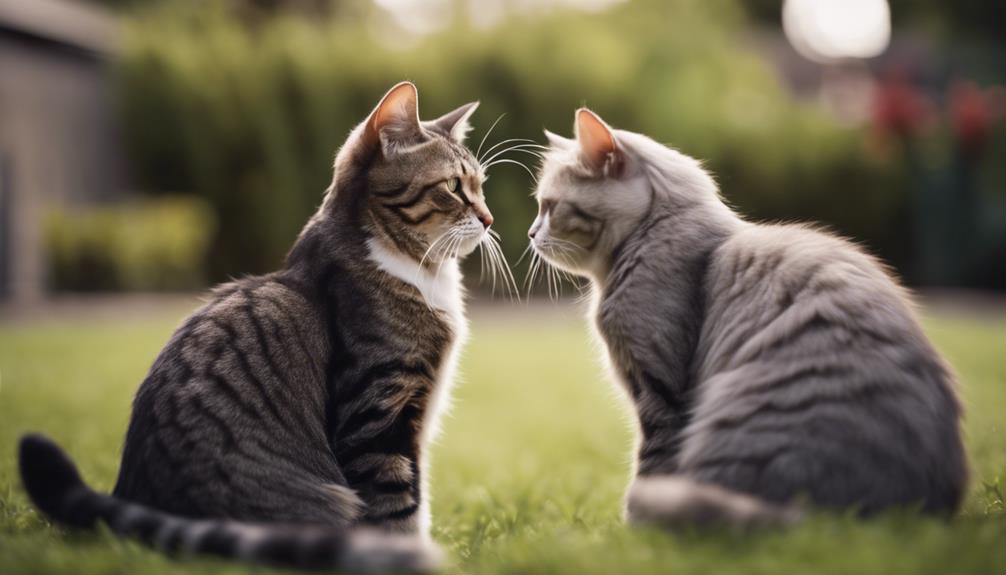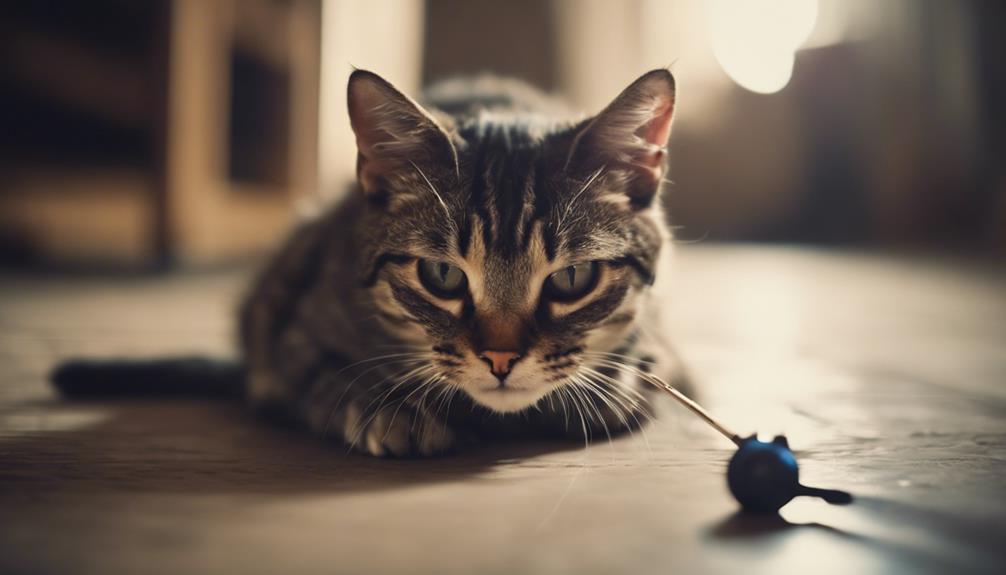How to Handle Hissing and Aggression in Cats

Cats can exhibit hissing and aggression due to various reasons, such as fear, stress, or feeling threatened. It is essential to handle these situations with care and understanding to address the underlying issues. Here are some tips for dealing with hissing and aggression in cats:
- First and foremost, remain calm and avoid escalating the situation further. Sudden movements or loud noises can exacerbate the cat's fear or aggression.
- Give the cat space and time to calm down. Allow them to retreat to a safe area where they can feel secure.
- Identify the triggers that may be causing the cat's aggressive behavior. This could be another pet, a loud noise, or a change in their environment.
- Consult with a veterinarian or a professional animal behaviorist to rule out any underlying medical conditions that could be contributing to the behavior.
- Implement positive reinforcement techniques to encourage good behavior. Reward your cat with treats or affection when they exhibit calm behavior.
- Provide environmental enrichment for your cat, such as interactive toys, scratching posts, and hiding spots, to help alleviate stress and boredom.
By understanding the root cause of your cat's hissing and aggression and taking appropriate steps to address it, you can help improve their behavior and strengthen your bond with them.
Understanding Cat Aggression
Understanding cat aggression can be crucial for cat owners in order to address and manage their feline companion's behavior effectively. Cats communicate through their body language, and recognizing signs of aggression is essential. Dilated pupils, flattened ears, hissing, and a tense body posture are common indicators that a cat may become aggressive. Knowing these signals can help owners intervene before a situation escalates.
When dealing with cat aggression, play therapy can be a valuable tool. Engaging in interactive play sessions with appropriate toys can help channel the cat's energy in a positive way, reducing pent-up frustration that may lead to aggression. Play therapy also strengthens the bond between the cat and its owner, fostering trust and companionship.
Identifying Triggers and Warning Signs

Identifying triggers and warning signs that precede cat aggression is vital for cat owners to proactively address and manage their pet's behavior. By recognizing body language cues and reducing stress factors, cat owners can create a safer and more harmonious environment for their feline companions.
Here are some key points to help identify triggers and warning signs:
- Body Language: Pay attention to your cat's body language, such as flattened ears, dilated pupils, and an arched back, which can indicate potential aggression. Understanding these cues can help you intervene before a situation escalates.
- Changes in Behavior: Be aware of any sudden changes in your cat's behavior, such as increased hiding, excessive grooming, or refusing to eat. These changes could signal underlying stressors leading to aggression.
- Environmental Stressors: Identify and eliminate stress factors in your cat's environment, such as loud noises, sudden movements, or conflicts with other pets. Creating a calm and predictable atmosphere can help reduce the likelihood of aggression.
- Routine and Consistency: Establish a consistent routine for feeding, playtime, and interactions with your cat. Predictability and stability can help lower your cat's stress levels and prevent aggressive behavior.
Creating a Safe Environment

When dealing with hissing and aggression in cats, creating a safe environment is crucial. Providing safe hiding spots and utilizing vertical space can help cats feel secure and reduce their stress levels.
Safe Hiding Spots
Creating safe hiding spots for your cat is essential in providing a secure environment where they can feel comfortable and retreat to when needed. Here are some tips to help you set up comforting spaces for your feline friend:
- Cozy Blanket Forts: Arrange soft blankets in quiet corners or under furniture to create a cozy hiding spot.
- Cat Condos: Invest in secure shelters like cat trees or condos where your cat can relax and feel safe.
- Cardboard Boxes: Cats love hiding in boxes, so leave a few around the house for them to retreat to.
- Quiet Rooms: Designate a peaceful room with hiding spots and vertical spaces for your cat to escape to when feeling overwhelmed.
Vertical Space Utilization
To further enhance your cat's sense of security and well-being, consider maximizing vertical space within your home to create a safe and stimulating environment. Climbing shelves and cat trees are excellent ways to provide your feline friend with opportunities to perch up high, observe their surroundings, and feel safe. Cats naturally seek elevated spots for comfort and security, so incorporating vertical spaces can help reduce their stress levels and prevent aggression.
Implementing Behavior Modification Techniques

Behavior modification techniques can be effectively implemented to address hissing and aggression in cats. By using positive reinforcement and clicker training, pet owners can help their feline companions overcome these behaviors. Here are some strategies to consider:
- Reward Good Behavior: Positive reinforcement involves rewarding desired behaviors, like calm interactions, with treats or praise. This encourages cats to repeat these behaviors in the future.
- Clicker Training: Clicker training is a useful technique where a clicker sound is paired with a treat to mark desired behaviors. This method helps cats understand what actions lead to rewards.
- Environment Enrichment: Providing a stimulating environment with toys, scratching posts, and climbing structures can help reduce stress and redirect aggressive behaviors.
- Consistency and Patience: Behavior modification takes time, so be consistent with training methods and patient with your cat's progress. Celebrate small victories and remain calm during setbacks.
Seeking Veterinary Advice

When it comes to handling hissing and aggression in cats, seeking veterinary advice is paramount. A professional behavior assessment conducted by a veterinarian can provide valuable insights into the underlying causes of the cat's behavior.
It's essential to consult with a vet to ensure the well-being and safety of both the cat and its human companions.
Vet Consultation Importance
Seeking veterinary advice is crucial when dealing with hissing and aggression in cats to ensure the health and well-being of both the cat and its owners. When consulting a vet about your cat's behavior issues, consider the following:
- Behavior Therapy: Vets can provide guidance on behavior modification techniques tailored to your cat's specific needs.
- Medication Options: In some cases, medication may be recommended to help reduce aggression and anxiety in cats.
- Health Assessment: Vets can conduct a thorough examination to rule out any underlying medical conditions contributing to the behavior.
- Professional Guidance: Vets offer professional insight and support to help you navigate through your cat's hissing and aggression, ensuring a safe and harmonious environment for everyone involved.
Professional Behavior Assessment
Upon consulting a veterinarian about a cat's hissing and aggression, owners can gain valuable insights through a professional behavior assessment tailored to the cat's specific needs. Behavior modification strategies can then be recommended based on this assessment, helping address the underlying causes of the cat's behavior.
Professional guidance from a veterinarian is essential in understanding the triggers for the hissing and aggression, as well as in implementing effective solutions. Through this assessment, the veterinarian can provide personalized advice on how to manage and improve the cat's behavior, creating a more harmonious environment for both the cat and its owners.
Seeking veterinary assistance for behavior issues in cats demonstrates a commitment to their well-being and can lead to significant improvements in their overall quality of life.
Handling Aggressive Encounters Safely

To safely handle aggressive encounters with cats, it's essential to approach the situation calmly and confidently, using gentle movements and avoiding sudden gestures. Here are some tips to help navigate these challenging situations:
- Maintain a safe distance: Give the cat space to prevent feeling cornered or threatened.
- Avoid direct eye contact: Cats may perceive this as a challenge or threat, exacerbating the aggression.
- Use soothing tones: Speak softly and reassuringly to help calm the cat down.
- Provide an escape route: Allow the cat to move away if it chooses to, reducing the chances of a confrontation.
Building Trust and Bonding Exercises

When working to build trust and strengthen the bond with a cat, engaging in bonding exercises can be highly beneficial. Trust exercises such as slow blinking at your cat, offering treats gently from your hand, and engaging in interactive play sessions can help foster a sense of security and closeness. These activities allow the cat to feel more comfortable and safe in your presence, gradually building trust over time.
Bonding activities like grooming your cat, providing cozy resting spots, and engaging in positive reinforcement training can also deepen the bond between you and your feline companion. Regular grooming sessions not only help maintain your cat's coat but also provide a soothing and bonding experience. Creating comfortable spaces where your cat can relax and feel secure is essential for building trust and strengthening your relationship.
Incorporating these trust exercises and bonding activities into your daily routine can significantly improve the bond you share with your cat, leading to a happier and more harmonious relationship.
Frequently Asked Questions
Can Certain Breeds of Cats Be More Prone to Aggression Than Others?
Certain breeds of cats may have genetic predispositions towards aggression. While individual temperament plays a significant role, breed differences can influence behavior. Understanding these traits can help owners provide appropriate care and manage potential aggression.
Is There a Correlation Between a Cat's Past Experiences and Their Likelihood of Displaying Aggression?
Past experiences can significantly influence a cat's likelihood of displaying aggression. Through behavior modification techniques, owners can help cats overcome negative past encounters. For example, a cat rescued from abuse may require patience and positive reinforcement to reduce aggressive behaviors.
Are There Any Natural Remedies or Supplements That Can Help Reduce Aggression in Cats?
Natural remedies, calming supplements, and herbal solutions can help reduce aggression in cats. Behavior modification techniques, socialization exercises, and identifying aggression triggers are essential. It's crucial to consult a veterinarian for guidance tailored to the cat's specific needs.
How Can I Prevent My Cat From Becoming Aggressive Towards Other Pets in the Household?
To prevent a cat from becoming aggressive towards other pets in the household, behavior modification techniques can be effective. Communication techniques like positive reinforcement and creating separate spaces can help reduce conflict and promote harmony among furry friends.
Are There Any Specific Training Techniques That Can Help Address Aggression in Senior Cats?
Struggling with aggression in senior cats? Discover effective behavior modification techniques tailored for older felines. Gentle training methods, positive reinforcement, and patience can help address and manage aggressive tendencies, fostering a harmonious environment for both the cat and its human companions.










